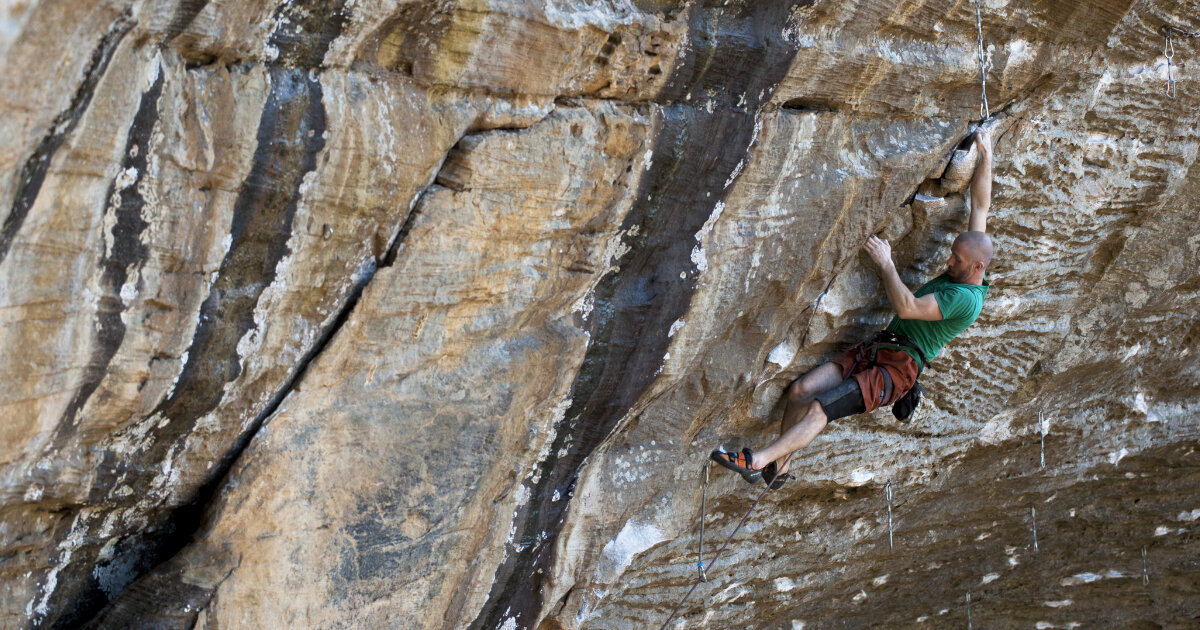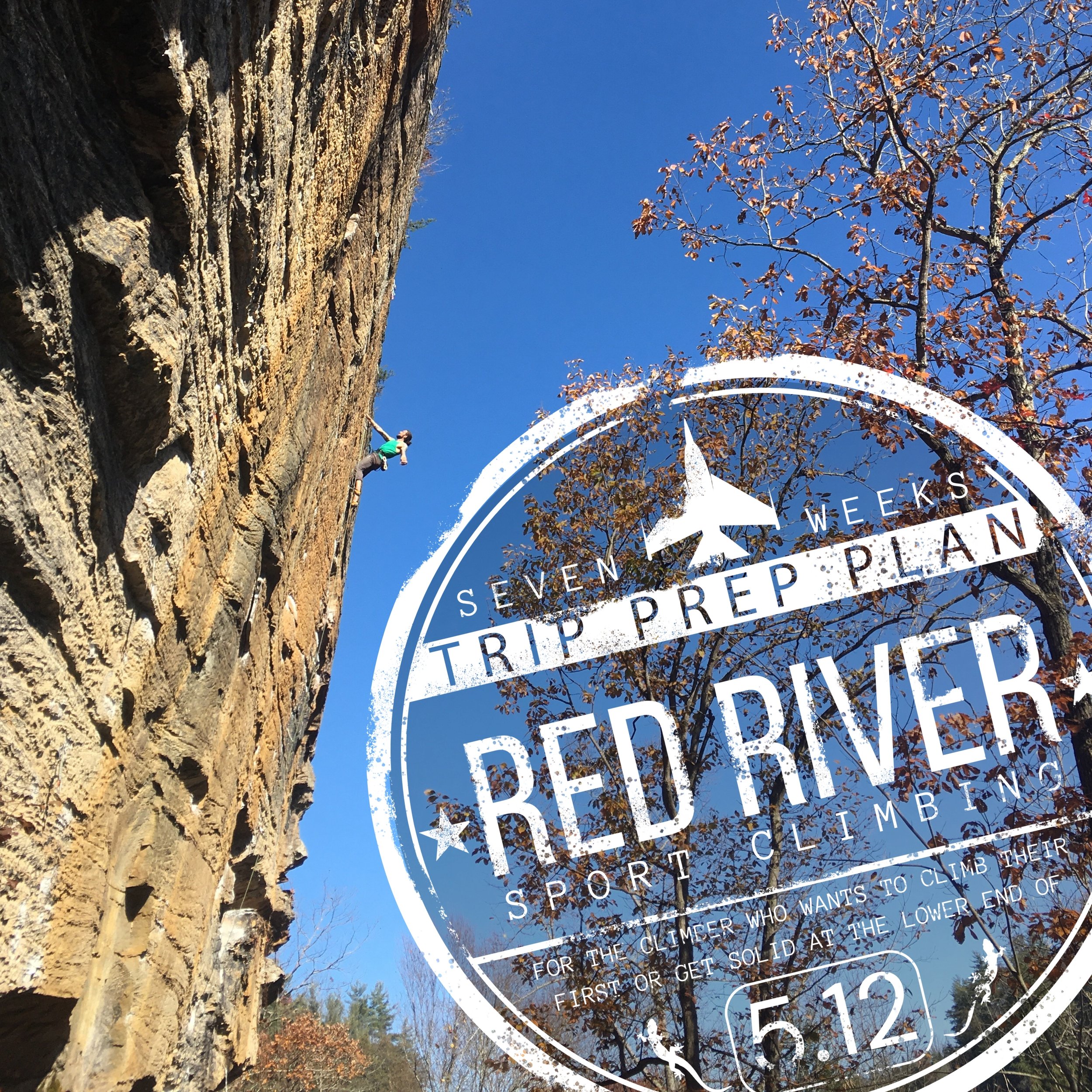What When How to Train | Sport Climbing in the Red River Gorge
The Red is unquestionably one of the most popular sport climbing destinations in the United States - and for good reason. It’s packed full of classic routes with friendly grips of textured sandstone at nearly every grade. I’ve spent many years of my life climbing in the RRG, and in my opinion, the grades with the most great routes are 11b, 12a, and 13b. Something for everybody.
What to Train
Endurance and Pump Management are the name of the game here. As with any area, you’ll be able to find technical routes, powerful routes, or just about any other style - but the real gold is in learning to climb while pumped. Very pumped. The kind of pump that makes you feel like you couldn’t possibly grab another hold. But then you do. And again.
And again.
Learning to rest on jugs is a must. Effective Red River climbers often spend 15-30 minutes - or even more for the mega pitches - on route. Much of that time is spent shaking out between short sections of slightly harder climbing. While in many areas difficulty can be strongly correlated to steepness and length, that isn’t necessarily the case in the Red. 5.11’s can be very steep and 100 feet long, and that continues to be the case through every grade. If you’ve planned a trip here, spend some time - continuous time - on steep terrain.
Most routes up to 5.13a in the RRG don’t have any single moves harder than about V4 or V5. But they have A LOT of V2 and V3 moves. I’ve seen many double digit boulderers skip the jug rests and pump out on V2 terrain just short of the chains. Don’t be that person.
When to Train
Over the past decade, the best seasons in the Red have changed a little. While October used to be the prime time, for the past few years October has seen temps in the high 90’s with humidity that feels like you’re breathing underwater. Not ideal. Instead, November is the better bet for a fall trip.
Spring can be rainy, but it’s pretty hard to get completely rained out in the Red. The terrain here is mostly overhanging - often extremely steep - and usually offers protection from spring storms. Early March through April is the prime time for a spring trip.
Ideally, you would start your training about 12 to 14 weeks out from the start of your trip or season. Because training for the style here is volume heavy for most folks, you’ll want a week or two of rest and lower volume climbing prior to your trip. I generally start my clients in December or the start of January for spring trips, and July or August for fall trips.
Kris on Transworld Depravity (5.14a) Photo by Taylor Frohmiller
How to Train for the Red River Gorge
I learned to climb in the Red, and I’ve trained literally thousands of climbers for successful Red River campaigns. How you approach your training depends on what level you are climbing at, and there are some things you’ll need to learn along the way, that while not unique to this area, are certainly part of the fabric of climbing here.
Below we give some tips that will help you at each level, as well as our training plans that are best suited for you. We have both Ebooks Plans and Proven Plans delivered through an app. Ebooks are entirely self supported and require a little more work on your end, while Proven Plans (which include a copy of the Ebook) give you access to a group chat moderated by a coach, as well as having each workout laid out for you in the app.
I Want to Climb 5.11
Focus on endurance and learning to rest on jugs. Get comfortable being pumped and then getting that pump down a bit at good stances. If you have access to indoor sport climbing, you should absolutely take advantage of it in order to get comfortable being on lead while climbing with a little fatigue. And you’ll do yourself a favor if you can learn to climb a little faster between good rest stances. Don’t entirely ignore the boulders though - you should be comfortable on V1 moves.
I Want to Climb 5.12
Learning to keep your composure while pumped should be the priority. This will require you to be pumped a lot while training. If you aren’t already good at resting on route - put some real time into not only learning how much you can get back - but also into spotting rest stances and creatively using them. Being comfortable on V3 terrain will be helpful. If you’ve never climbed on textured sandstone, learning to relax and let the friction do the work can often mean the difference between sending and pumping out halfway. It’s likely to be helpful for you to spend time sport climbing in the gym, particularly for leveling up your comfort levels being pumped above bolts, but we also have plans that can accommodate climbers who only have access to bouldering for training.
I Want to Climb 5.13
At this point you should be fairly well versed in the art of resting on the wall and both managing and climbing through a pump. If not, start there (using our Climb 5.12 programs). It’ll make a big difference. In fact, starting here the rest stances may often revolve around slopier jugs or large edges rather than the buckets of the 5.12’s (though you’ll still find those too). Once you’re comfortable on a rope, most of your time training should be spent on the boulders. The 5.13’s in the Red generally string a few more moderately hard moves together than the 5.12s, but also have long, continuous sections that in most areas would be a 12a or so by itself. Power Endurance, but leaning toward the aerobic side of it, should be your big focus. Being able to boulder V5 consistently and efficiently will set you up well.
I Want to Climb 5.14
The crux sequences of most of the 5.14’s in the Red tend toward the V8-V9 range. Occasionally you’ll find harder (and occasionally they’ll be as low as V6-V7), but if you can be efficient at that level, you’ll be rewarded. While the terrain between cruxes is usually significantly easier, you will often encounter pumpy 13- sections, so having a solid base of climbing specific aerobic conditioning will be a huge help. Ideally, you should be able to climb 12c or a dialed 13- without much pump - even to the point that you can recover a little from pump while climbing it. Most climbers at this level can get back to comfortable on a rope in a just a session or two, and because it’s far more efficient, your training should be primarily done on boulders.



















Looking to climb on sandstone cliffs full of high-angled crimps? Look no further than the Blue Mountains, Australia’s sport climbing mecca.